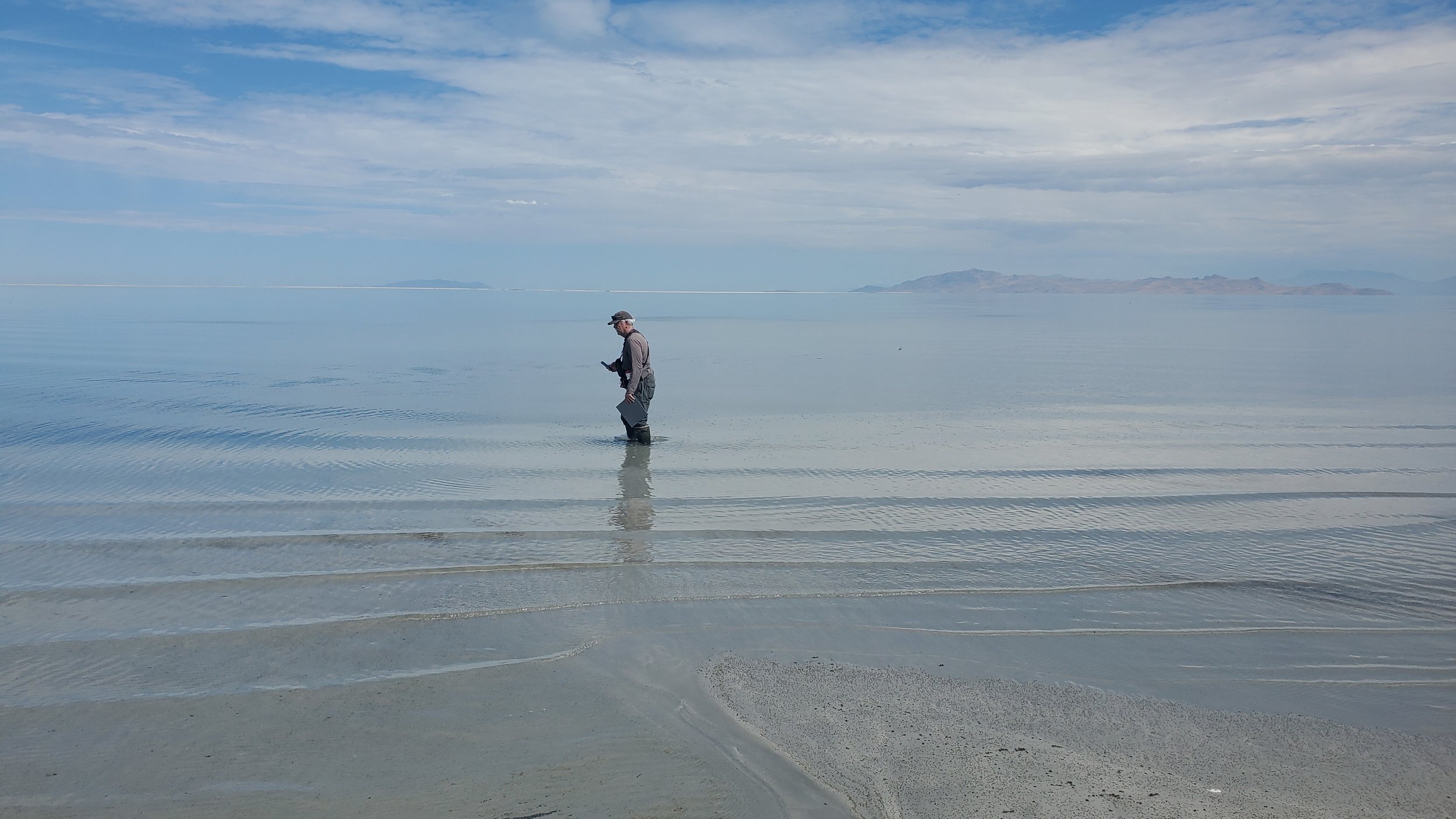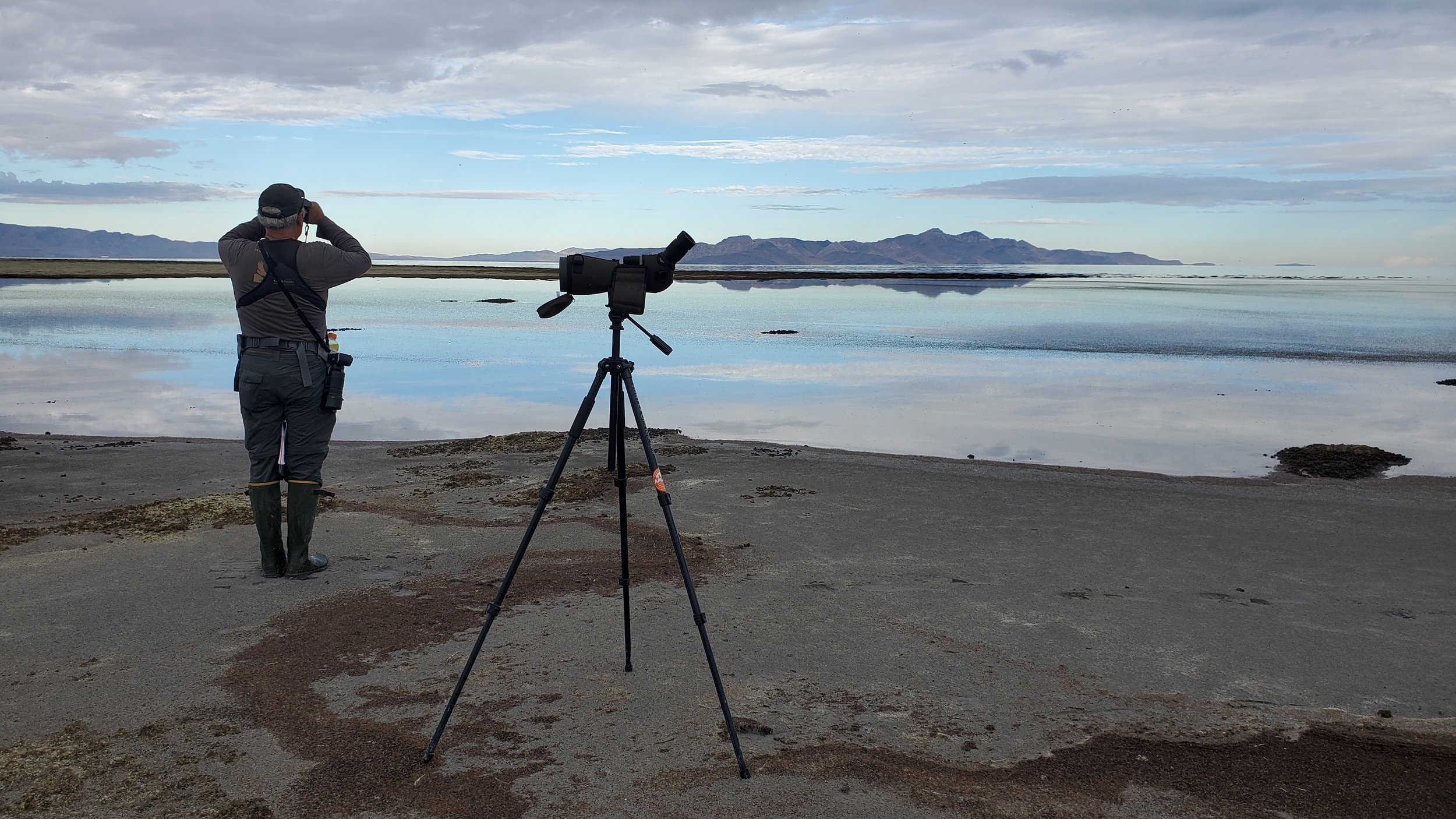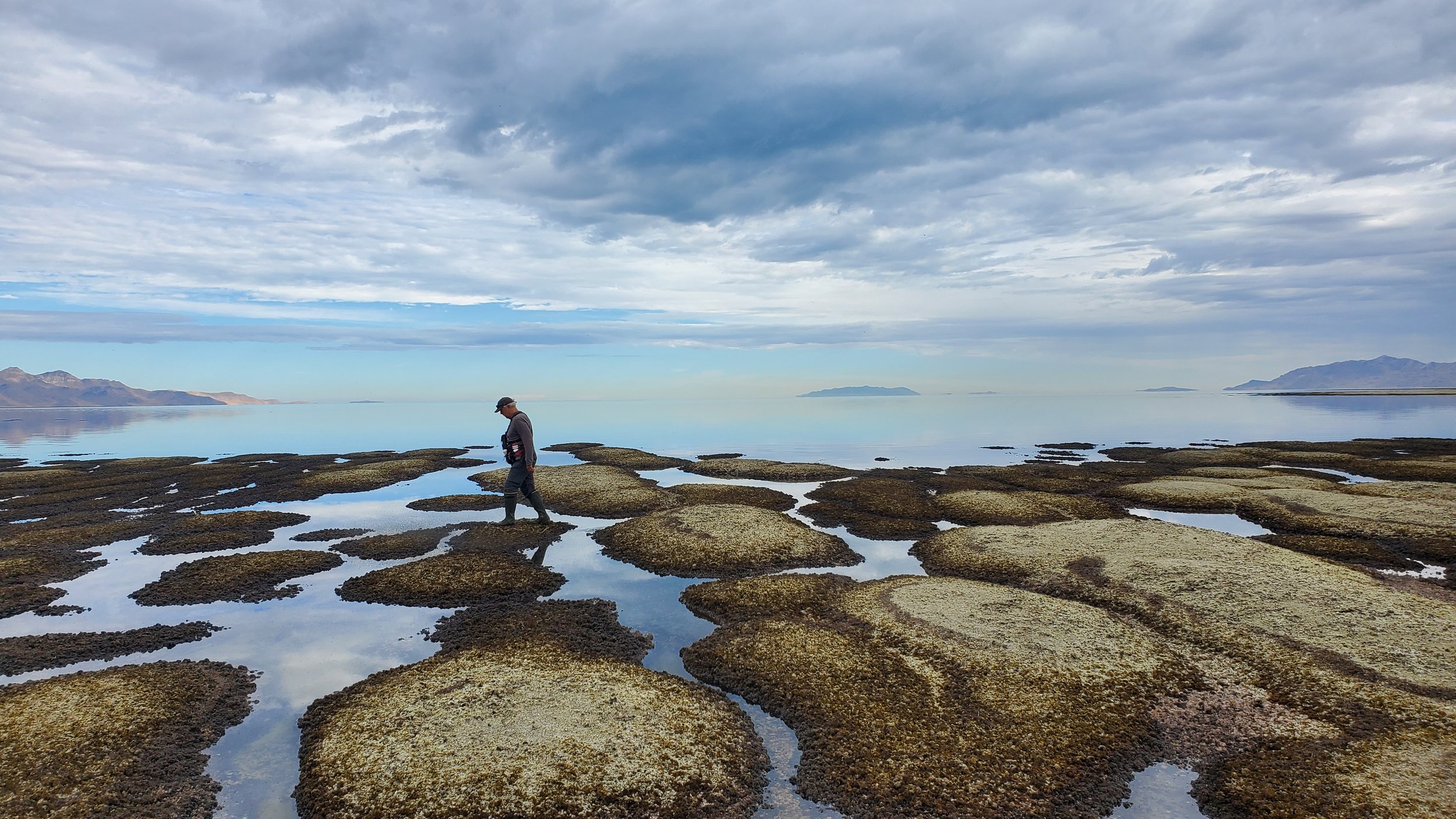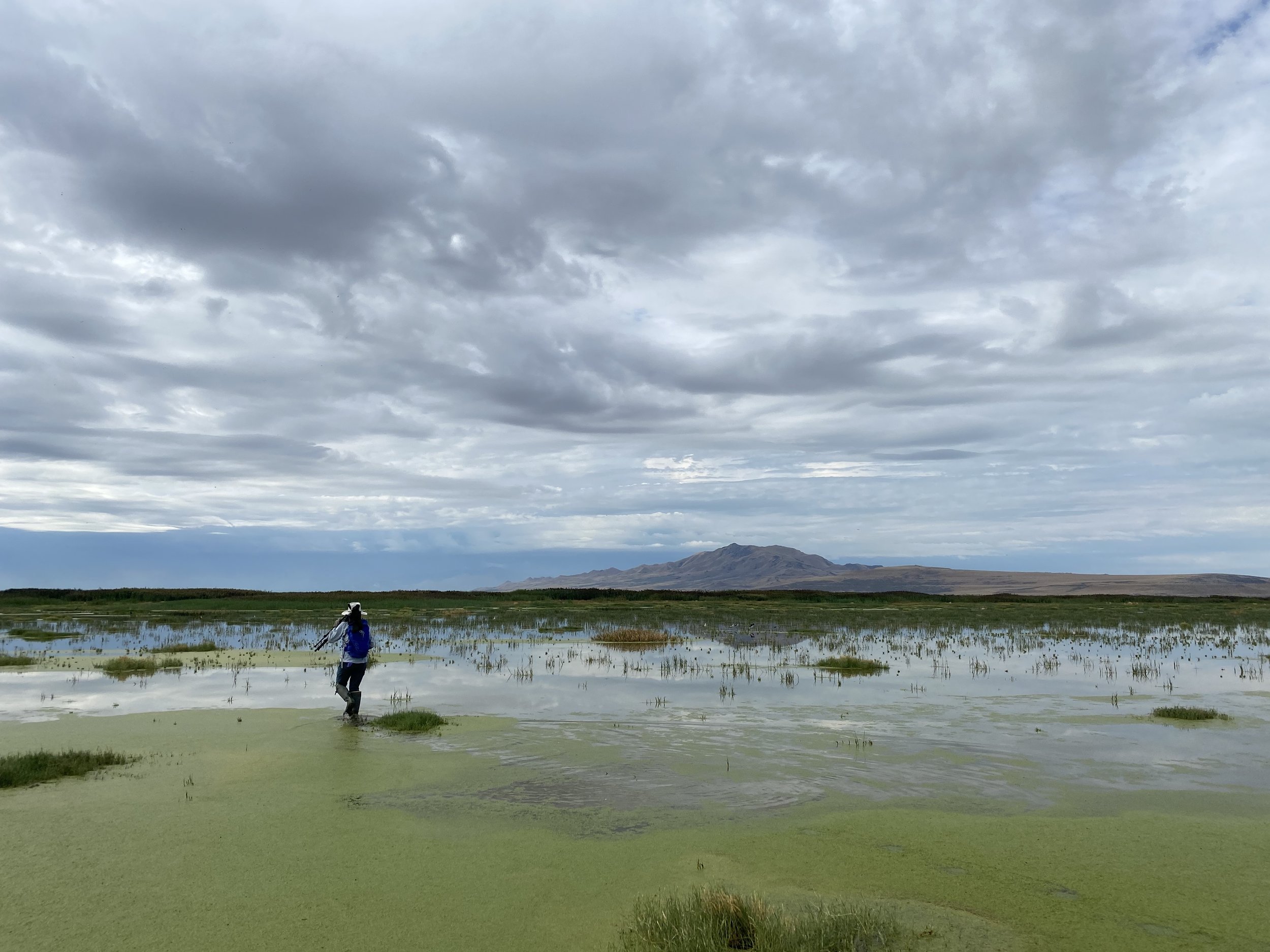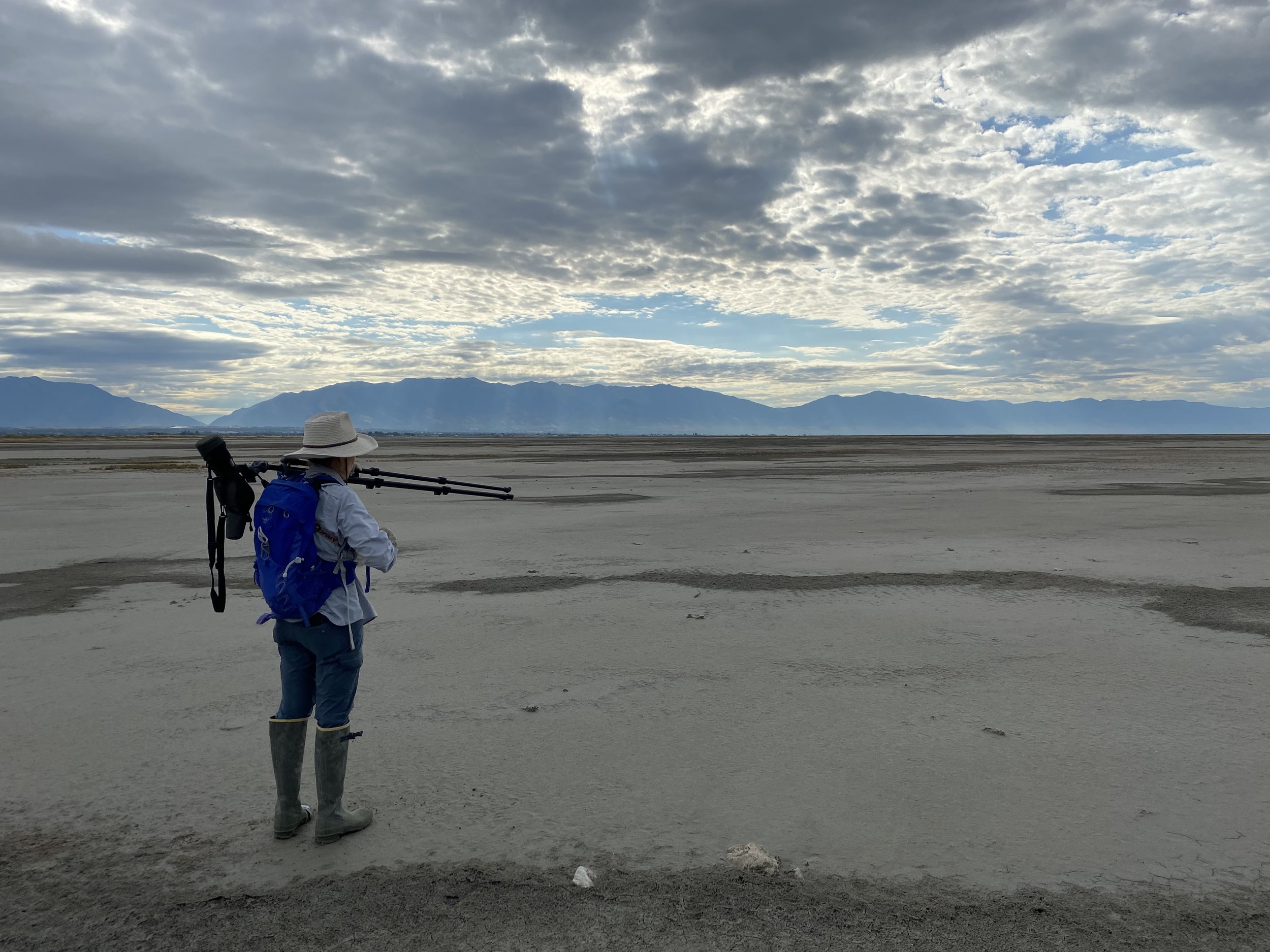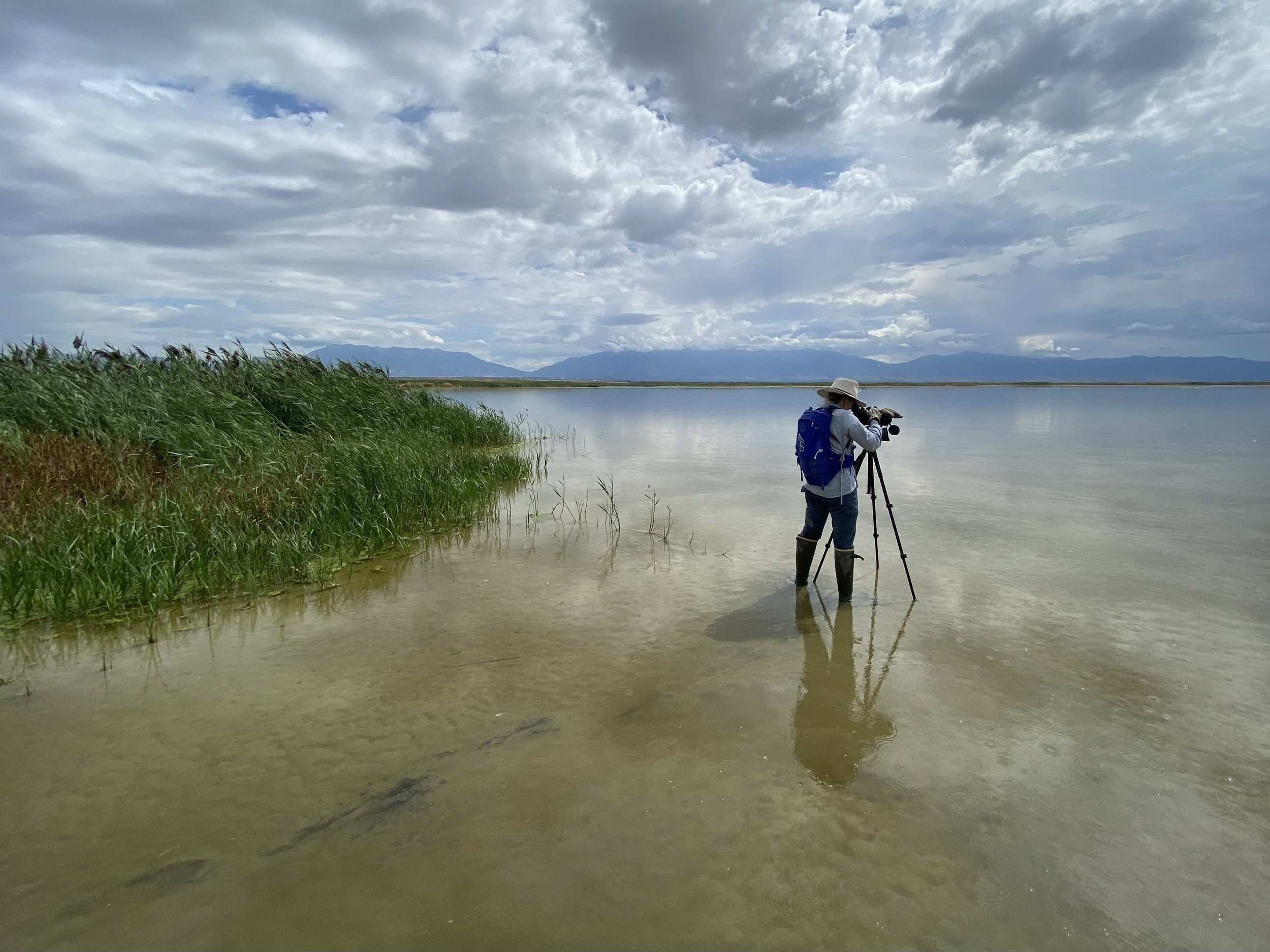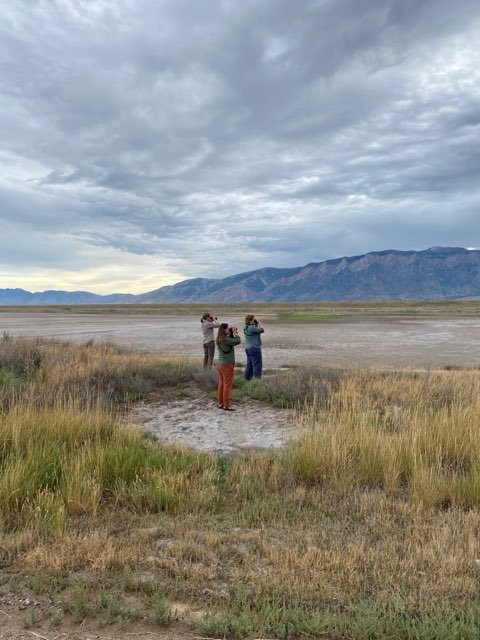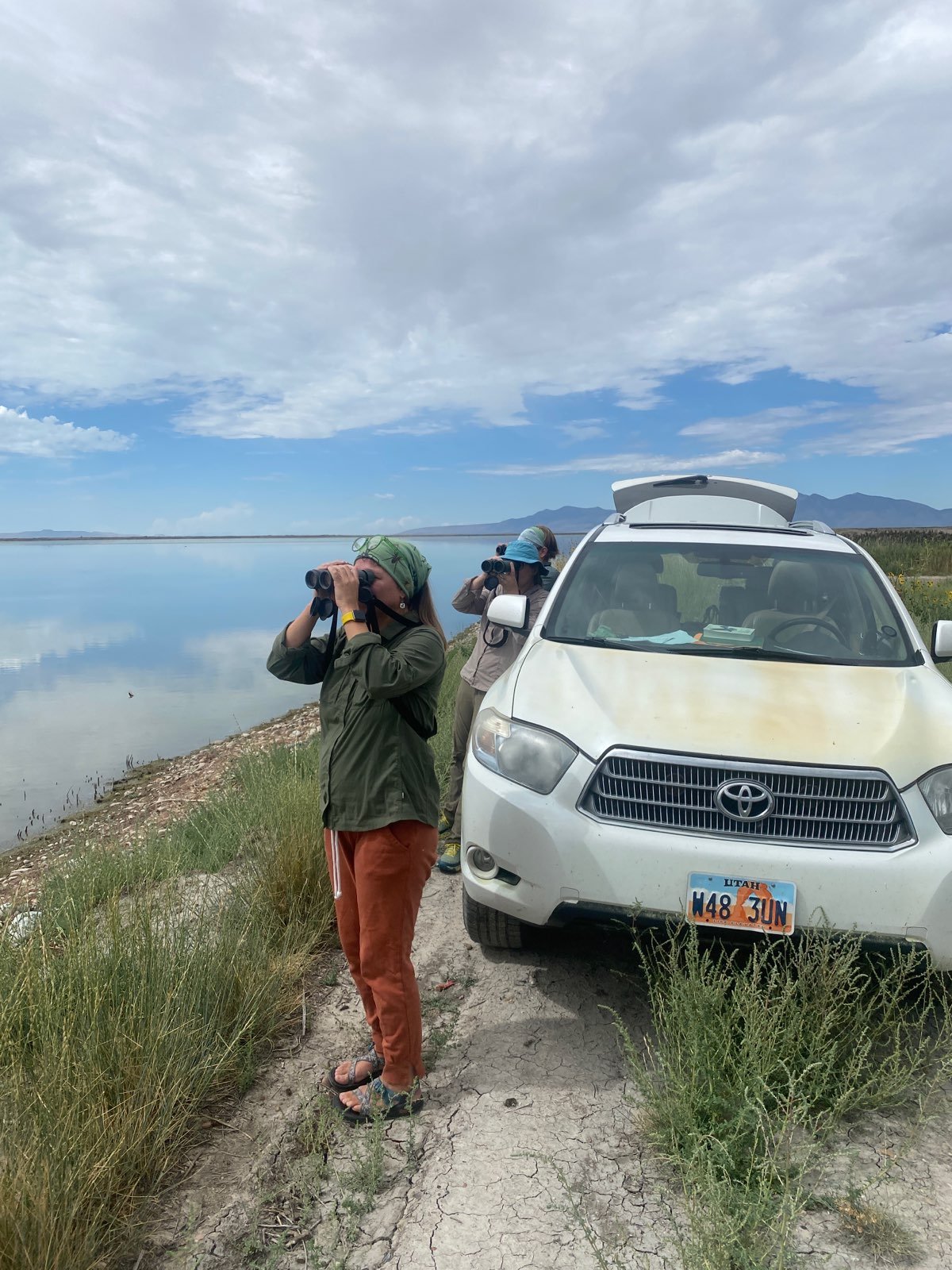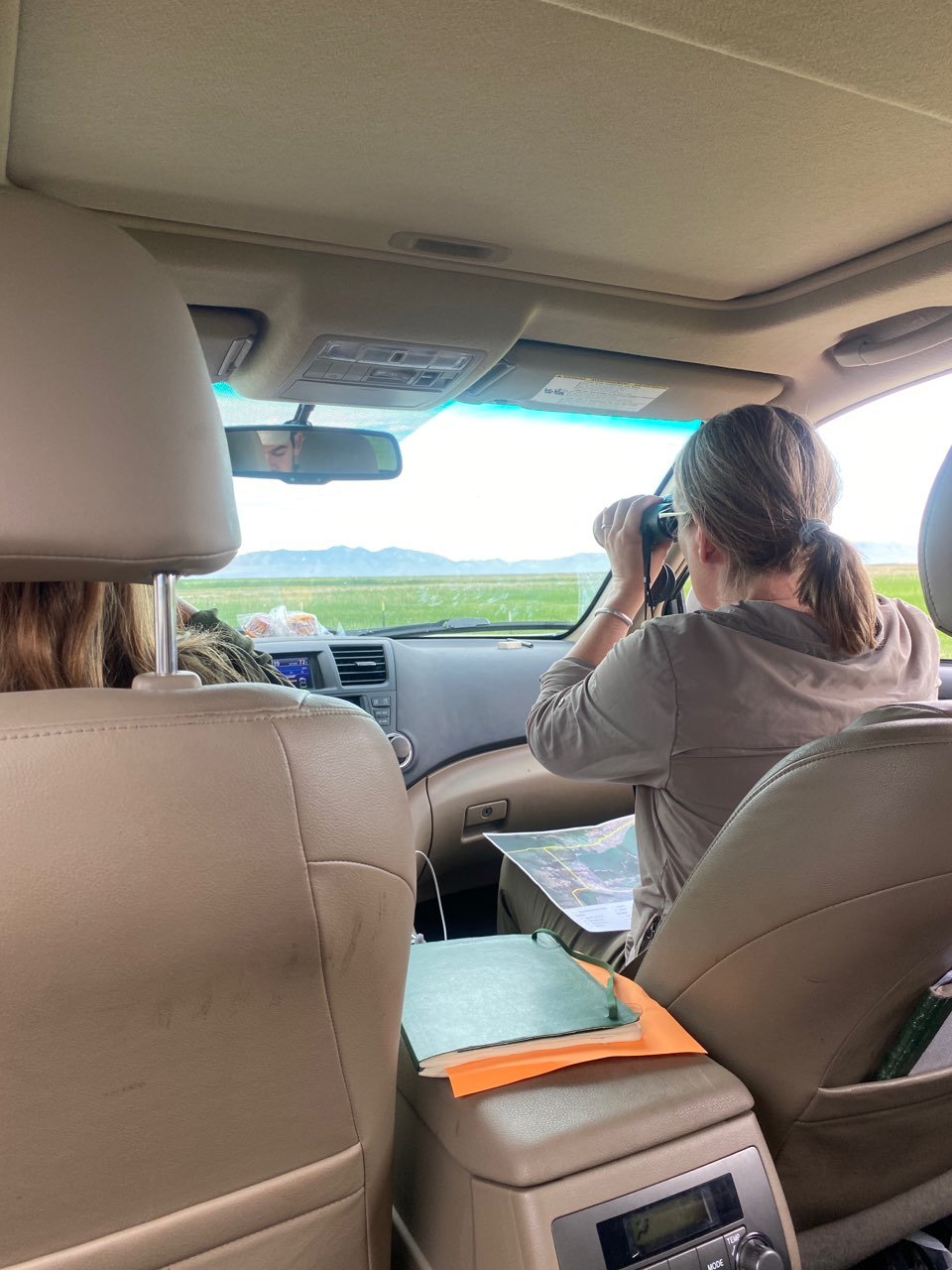Collaborating to Count the Shorebirds of Great Salt Lake
It’s no secret that the Great Salt Lake is vitally important for shorebirds like phalaropes, avocets, stilts, and sandpipers.
From 1989 to 1995, in a large collaborative survey across the Intermountain West, scientists and state agencies counted shorebird populations in an effort to understand their abundance and migration. The data collected made it clear: the lake is essential for these species.
Photos from a survey of the south shore of Great Salt Lake by Max Malmquist, Mike Malmquist, and Josh Edgar.
“The 1980s sparked an interest in shorebird conservation that wasn’t there before. That survey was an attempt to establish a baseline of information on the birds,” says Don Paul, a retired biologist from Utah Division of Wildlife Resources. Don was involved in the Intermountain West Shorebird Survey 1989-1995, and was a key organizer in the Great Salt Lake Waterbird Survey conducted from 1997-2002.
“The difference now is that there is a 14 foot difference in lake elevation between this survey and the first survey. It’s a significantly different landscape.”
That changed landscape manifests in many ways. Freshwater wetlands, which are important habitats for shorebird nesting and used to closely border the Lake, are now separated from the shore by miles, straining the relationship between water, food, and habitat that shorebirds rely on. Invasive species like phragmites have taken over much of the Lake’s wetlands.
And as the water level of the Lake drops, the salinity increases beyond the level that brine shrimp and brine flies—crucial food sources for millions of shorebirds—can survive.
In light of these changes and challenges to the Lake, biologists and birders recently gathered to survey over 60 sites across the Great Salt Lake. Working with National Audubon Society, Point Blue Conservation Science, Utah Division of Wildlife Resources, and other partners, Sageland Collaborative biologist Janice Gardner organized teams of volunteer birders to recreate the 1989-1995 survey across the Intermountain West. These teams covered the Great Salt Lake, Utah Lake, Fish Springs National Wildlife Refuge, and the Amalga Barrens.
This collaborative approach to conservation allows scientists and decision makers to think on a large scale, as Gardner describes:
“The wetlands and waters shorebirds rely on are drying up. Managing water in the West is complex and the entire community needs to be involved in solutions. Counting shorebirds to understand where they are and what they need allows us to target conservation actions.”
Video of a large flock of shorebirds near Antelope Island from an airboat survey of Farmington Bay, by Carter Boyd.
On August 12, 100 surveyors spread out to count 228,000 shorebirds across the four areas in Utah. This survey is part of a larger effort spanning several states across the American West and will continue for several years each spring and fall.
Gathering data on this large scale puts the importance of each site into context, shedding light on the value of particular sites across the entire migratory path, or “flyway.” Knowing which sites are vital to which bird populations across their range allows focused habitat restoration and water conservation efforts based on the value of those sites. As the crises of drought, habitat destruction, wildfire, and climate change deepen across the West, collaborative, large-scale data collection and informed decision making based on that data will provide hope for shorebird populations.
Jens Ammon, an intern with Sageland Collaborative and a Restoration Ecology master's student at Utah State University, surveyed south of the Antelope Island Causeway and witnessed a dozen species of shorebirds, including 3,000 American Avocets. “Shorebirds are an icon of the Great Salt Lake,” he says. “It's impossible to think of the lake without also thinking about all the birds that stop by on their migrations. As the lake ecosystem undergoes these recent changes, we tend to take the presence of these birds for granted.”
Photos of biologist Heidi Hoven surveying south of the Antelope Island Causeway, by Jens Ammon.
A project on the scale of the Intermountain West Shorebird Survey is important for the way that it brings people together. Participants ranged from young students just entering conservation work, like Ammon, to wildlife managers like Paul, who have dedicated much of their lives to the Lake and its birds.
“Even back in the 1980s, we recognized there would be an anthropogenic effect on the Lake,” Paul says. “As we grew around the Lake and looked at its water as something we can take from it, we’ve always known the potential that this would happen.” Keeping up with those changes that the Lake is undergoing–and understanding how those changes affect the wildlife of the Lake–would be impossible for biologists to do alone. By involving such a diverse group of volunteers and community scientists, survey organizers were able to gather incredible amounts of data and understand more than ever before about shorebird migration across the region and the world.
Many of the birds counted in Utah in August stop over at the Lake on migrations that span thousands of miles. Wilson’s Phalaropes, for example, spend winters in Argentina but can be found at Great Salt Lake feeding on the abundant food sources. This hemispheric migration makes large-scale collaboration essential to conserving these birds.
“It is wonderful to think that Wilson’s Phalaropes during the Utah winter are swimming in the waters of Mar Chiquita, Argentina, enjoying the austral summer,” says Marcela Castellino, a flyway conservation specialist. Manomet, a collaborative conservation organization where Castellino works, is a world leader in shorebird conservation.
“Phalaropes amaze me with their long migrations, being as small and delicate as they appear to be,” says Castellino. In particular, they connect me with this sense of unity across the hemisphere. Connections between sites create ties in people, and I think that is key.”
Photos of surveyors Rose Smith, Jaimi Butler, and Mary Anne Karren at Harold Crane Waterfowl Management Area, by Jackson Graessle
Partner organizations like Manomet will use the data gathered from the Intermountain West Shorebird Survey to understand threats to shorebirds with a hemispheric range, such as the Wilson’s Phalarope.
Castellino points to the importance of working together to create large pictures of shorebird populations within the state of Utah, across the Western U.S., and over the far-reaching, global ranges of these incredible birds. “It opens up our understanding, and it opens opportunities to collaborate to conserve these species,” Castellino says.
“I continue to be impressed at what our volunteer community scientists are willing to do to support shorebird conservation,” Gardner says about her experience organizing the Great Salt Lake portion of the survey.
“With so many volunteers, we can accomplish amazing things. We put a single Utah wetland in the context of a shorebird's journey all the way from the Arctic to Argentina.”

